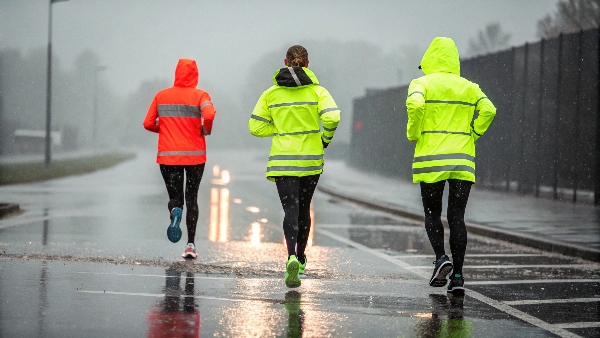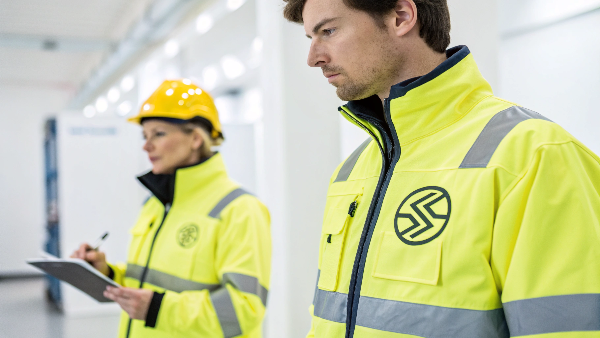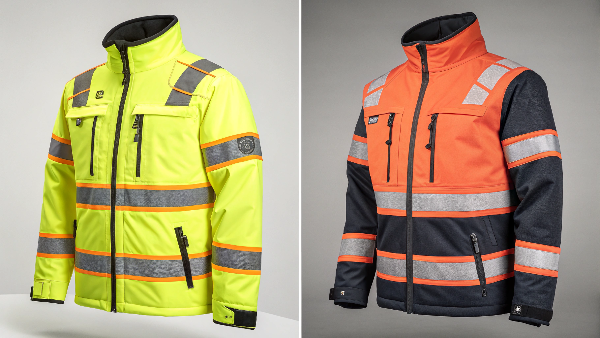Finding truly reliable safety vest suppliers is hard. Agitate: Poor quality or late deliveries can hurt your business. Solution: We offer dependable, affordable safety vest solutions you can trust.
Yes, reliable and economical safety vest manufacturers exist. The key is to look for proven track records, strong quality certifications like ISO, efficient production capabilities, and transparent pricing. At Vissafetywear, we embody these qualities, ensuring you receive top-notch, compliant safety vests without overpaying, delivered right when you need them.
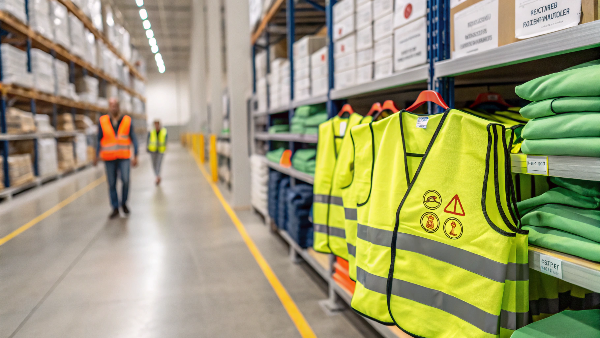
Choosing the right safety vest involves more than just looking at the price tag. You need to understand the materials, the different safety classes, and the features that matter for your specific work environment. This knowledge is vital for keeping your team safe and your company compliant. I want to walk you through some common questions we hear. This will help you make the best choice. Let's explore these important aspects together, so you can feel confident in your decision.
What is the best material for safety vests?
Confused by all the material choices for safety vests? Making the wrong choice can mean discomfort for your team or even failing to meet safety rules. We can help you pick the ideal, compliant materials.
The best material really depends on the job. Polyester is very common because it's durable and doesn't cost too much. For hot weather, mesh polyester is great because it lets air flow. Some special vests use Modacrylic if they need to be flame-resistant. We'll help you choose what's right for your work.
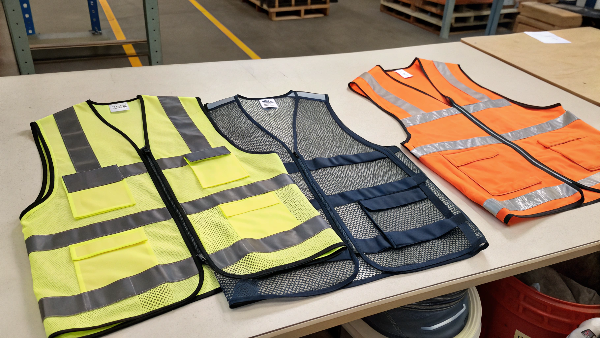
When we talk about safety vest materials at Vissafetywear, we focus on matching the material to the specific needs of your workers and their environment. It's not a one-size-fits-all situation.
Common Safety Vest Materials
We primarily work with a few core materials, each chosen for its specific benefits:
- Polyester (Solid): This is a workhorse material. It's strong, resists shrinking and stretching, and holds color well. It’s also quite economical, making it a popular choice for general-purpose safety vests. We often recommend this for construction or logistics teams who need durable, everyday wear.
- Polyester (Mesh)1: For workers in hot climates or those who are very active, mesh polyester is a game-changer. The open weave allows for excellent airflow, keeping the wearer cooler and more comfortable. We find this is popular for road crews in the summer or warehouse staff in non-air-conditioned spaces.
- Modacrylic (for FR Vests)2: When flame resistance (FR) is a requirement, such as in the oil & gas industry or for electrical workers, Modacrylic is a key material. It’s inherently flame-resistant, meaning the FR properties don’t wash out or wear away.
Key Considerations When Choosing Materials
Here's a simple table to help you think about it:
| Material | Key Properties | Best For |
|---|---|---|
| Solid Polyester | Durable, economical, good color retention | General construction, logistics, everyday use |
| Mesh Polyester | Breathable, lightweight | Hot weather, high activity levels, indoor warehouses |
| Modacrylic | Flame-resistant, durable | Oil & Gas, utilities, welding environments |
| Eco-Friendly Options3 | Recycled polyester, organic cotton blends (less common for hi-vis) | Companies with strong sustainability mandates |
At Vissafetywear, we also explore eco-friendly materials like recycled polyester. Our mission includes not just protecting people, but also being mindful of the planet. We can discuss these options if sustainability is a key priority for your business. We ensure all materials meet quality standards and any specific compliance needs like EN ISO 20471 or ANSI/ISEA 107.
What is the highest class safety vest?
Unsure about the different safety vest classes? Picking the wrong class can put your workers' safety at risk and lead to compliance issues. We're here to explain the highest class for maximum protection.
The highest class under the ANSI/ISEA 107 standard is Class 3. These vests are designed for maximum visibility. They are used in complex backgrounds and high-speed traffic areas. Class 3 vests have the most background and retroreflective material, and they often include sleeves for added visibility.
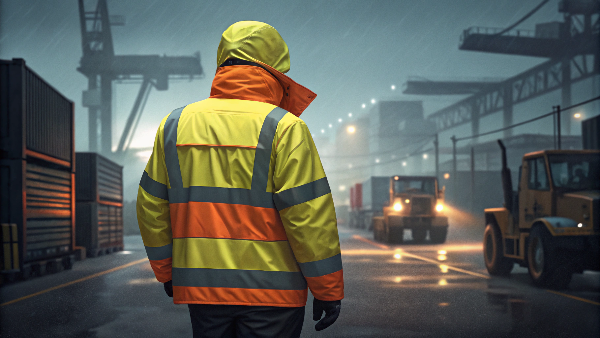
Understanding safety vest classifications is crucial, and Class 3 represents the pinnacle of visibility in the ANSI/ISEA 107 standard4. At Vissafetywear, we manufacture many Class 3 vests5 because some of our clients, like those Danny Cheng supports in North America, need this highest level of protection for their teams.
The ANSI/ISEA 107 Standard
The American National Standards Institute (ANSI) and the International Safety Equipment Association (ISEA) jointly publish the ANSI/ISEA 107 standard. This standard specifies requirements for high-visibility safety apparel6 (HVSA). It defines different "Types" of garments based on the work environment (e.g., Type R for Roadway) and "Performance Classes" (1, 2, or 3) based on the amount of visible materials.
Class 3 Requirements Explained
Class 3 garments are intended for workers who face serious hazards and often have high task loads that require attention away from traffic. These conditions involve high-speed traffic (over 50 mph), complex backgrounds, and when the wearer must be conspicuous through a full range of body motions at a minimum of 1,280 feet.
Key features of Class 3 vests include:
- Maximum Background Material: A larger area of fluorescent material (e.g., yellow-green or orange-red).
- Maximum Retroreflective Material: More reflective tape, often in specific patterns, to ensure visibility from all angles, especially in low light.
- Sleeves: Class 3 garments typically have sleeves with retroreflective material to provide 360-degree visibility of the human form.
When to Use Class 3 Vests
You should choose Class 3 vests for:
- Roadway construction workers in high-speed zones.
- Utility workers near fast-moving traffic.
- Emergency responders at accident scenes on highways.
- Survey crews working on or near busy roads.
Here's a quick comparison:
| Class | Minimum Background Material (sq. inches) | Minimum Retroreflective Material (sq. inches) | Typical Use |
|---|---|---|---|
| Class 1 | 217 | 155 (configured) | Workers well separated from traffic, low-speed environments |
| Class 2 | 775 (Yellow/Orange) or 540 (Red) | 201 (configured) | Workers near traffic < 50 mph, inclement weather, complex backgrounds |
| Class 3 | 1240 (Yellow/Orange) or 775 (Red) | 310 (configured) | Workers near traffic > 50 mph, high-risk environments, poor sight distances |
Our factory, Vissafetywear, is fully equipped to produce Class 3 vests that meet these strict requirements, ensuring your workers have the best possible protection. We have over 20 advanced production lines and an industry-leading lab to ensure every garment complies with global standards.
What's the difference between class 2 and class 3 safety vests?
Is it Class 2 or Class 3? This can be very confusing for many people. If you select the incorrect class, it can really compromise safety standards. We want to clarify the key differences for you.
Class 3 vests offer more visibility than Class 2 vests. They need more background fluorescent material and more reflective tape. Class 3 vests also often have sleeves. You use Class 3 for high-risk areas, while Class 2 is good for moderate-risk situations.
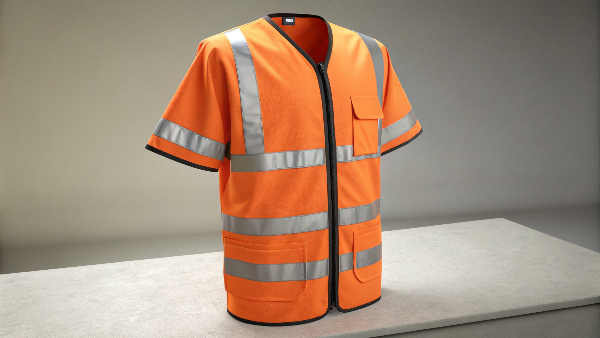
Distinguishing between Class 2 and Class 3 safety vests is vital for ensuring appropriate worker protection. While both offer enhanced visibility compared to everyday clothing, Class 3 provides a significantly higher level. At Vissafetywear, we help our clients understand these differences so they can make informed choices.
Key Differences: Material Coverage and Design
The primary distinction lies in the amount of high-visibility material7 required:
- Background Material: Class 3 vests require a larger surface area of fluorescent background material. For example, ANSI/ISEA 107 specifies 1240 sq. inches for yellow/orange Class 3 garments, compared to 775 sq. inches for Class 2. This makes the wearer more conspicuous during daylight hours.
- Retroreflective Material: Class 3 vests also mandate more retroreflective tape (310 sq. inches vs. 201 sq. inches for Class 2). This tape reflects light back towards its source, like headlights, making the wearer visible in low-light conditions.
- Sleeve Requirements: A defining feature of many Class 3 garments is the inclusion of sleeves. These sleeves must also have retroreflective bands, further outlining the human form and enhancing visibility, especially when workers are moving or in non-upright positions. Class 2 vests are typically sleeveless.
Risk Assessment: When to Choose Which Class
The choice between Class 2 and Class 3 depends on a thorough risk assessment8 of the work environment:
- Class 2: Suitable for workers who need greater visibility in environments with traffic speeds below 50 mph, or where work backgrounds are complex. Examples include roadway construction workers in lower-speed zones, utility workers, and airport ground crews.
- Class 3: Essential for workers in high-risk environments. This includes exposure to traffic exceeding 50 mph, conditions where the worker must be visible from a minimum distance of 1,280 feet, and situations where the worker is often distracted from traffic. Think of highway construction crews, emergency responders on freeways, and railway workers.
Here's a table summarizing the main differences:
| Feature | Class 2 Safety Vest | Class 3 Safety Vest |
|---|---|---|
| Primary Use | Moderate-risk environments | High-risk environments, high-speed traffic |
| Traffic Speed | Typically < 50 mph (80 km/h) | Typically > 50 mph (80 km/h) |
| Min. Background Mat. | 775 sq. in. (yellow/orange) | 1240 sq. in. (yellow/orange) |
| Min. Reflective Mat. | 201 sq. in. | 310 sq. in. |
| Sleeves | Typically sleeveless | Often includes sleeves with reflective material |
| Overall Visibility | Good | Highest |
We at Vissafetywear have helped many clients, including those like Danny Cheng who need to supply various sectors in North America, select the appropriate class by discussing their specific operational hazards. Our mission is to ensure every worker gets the right level of protection.
What is a type 3 safety vest?
Have you heard people talking about "Type 3" safety vests and wondered exactly what they are? The terminology in safety standards can be a bit tricky and sometimes leads to confusion. We're here to explain this high-visibility garment standard in a clear way.
"Type 3" usually refers to ANSI/ISEA 107 Class 3 vests, especially Type R Class 3. These vests offer the highest level of visibility. They are for workers in high-traffic, high-speed areas. They need a lot of fluorescent and reflective material.

When people mention a "Type 3" safety vest, they are generally referring to a specific designation within the ANSI/ISEA 107 standard. This standard categorizes high-visibility safety apparel (HVSA) by "Types" based on the work environment and "Performance Classes" based on material amounts.
Understanding ANSI/ISEA 107 Garment Types
The ANSI/ISEA 107 standard defines three main garment "Types":
- Type O (Off-Road): For workers in non-roadway environments who still need visibility but are not exposed to traffic. This includes workers in warehouses or parking lots away from public roads. Performance Class 1 is common here.
- Type R (Roadway): For workers exposed to roadway traffic and work backgrounds. This is the most common type for construction, utility, and emergency response personnel. These can be Class 2 or Class 3.
- Type P (Public Safety): For emergency and incident responders and law enforcement personnel who are exposed to traffic. These garments have specific requirements for easy access to equipment and often include features for identification. These can also be Class 2 or Class 3.
Type R Class 3 Explained
So, a "Type 3" vest is most accurately described as a Type R, Class 3 garment (or sometimes Type P, Class 3). This means it's designed for roadway environments (Type R) and meets the highest visibility requirements (Class 3).
Here's what that entails:
- Maximum Visibility: The highest amounts of both fluorescent background material and retroreflective tape.
- Coverage for the Torso and Sleeves: Class 3 garments under Type R typically include sleeves to provide 360-degree visibility of the human form, making it easier for drivers to recognize a person.
- High-Risk Environments: Intended for workers in the most hazardous conditions, such as high-speed roadways (over 50 mph), complex work zones, and poor weather conditions.
Importance for Roadway Workers
For anyone working on or near active roadways with fast-moving traffic, a Type R Class 3 vest is often mandatory. It provides the highest likelihood of being seen by drivers from significant distances, day or night.
| ANSI HVSA Type | Environment Description | Common Performance Classes | Typical Worker Examples |
|---|---|---|---|
| Type O | Off-road, controlled environments, not exposed to roadway traffic | Class 1 | Warehouse staff, parking lot attendants (away from road) |
| Type R | Roadways, exposure to traffic, construction zones | Class 2, Class 3 | Road construction crews, utility workers, flaggers |
| Type P | Public safety, emergency response, law enforcement | Class 2, Class 3 | Police officers, firefighters, EMS personnel |
At Vissafetywear, we manufacture a wide range of Type R Class 2 and Class 3 vests. We ensure they meet all the detailed specifications of the ANSI/ISEA 107 standard. Our R&D lab with its 75+ testing devices helps us guarantee this compliance for our clients worldwide.
Is Velcro or zipper safety vest better?
Velcro or zipper? This is a common question when choosing a safety vest closure. Picking the wrong one can be more than just inconvenient; it could even be unsafe in certain situations. We want to compare them to help you make a good decision.
Neither Velcro nor zippers are universally "better"; it really depends on the job and personal preference. Zippers offer a very secure and often neater fit. Velcro allows for very quick removal and can provide a "breakaway" safety feature if the vest gets snagged on machinery.
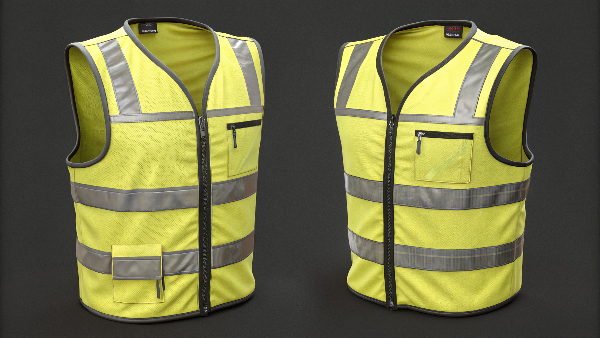
The choice between Velcro (hook and loop) and zipper closures on safety vests is a practical one that impacts daily use, safety, and durability. At Vissafetywear, we offer both options because we understand different jobs and preferences call for different features.
Advantages of Zipper Closures
Zippers are a popular choice for several reasons:
- Secure Fit: Zippers generally provide a more snug and secure closure, meaning the vest is less likely to flap open, especially in windy conditions or during vigorous activity. This helps maintain the vest's intended coverage.
- Durability: High-quality zippers can be very durable and withstand many cycles of opening and closing. They are less prone to wearing out quickly compared to some lower-quality Velcro.
- Neat Appearance: Zippers often give a vest a tidier, more professional look. This can be a factor for companies where public image is important.
- Fewer Snags: Zippers are less likely to snag on other clothing or materials compared to the "hook" side of Velcro.
Advantages of Velcro Closures
Velcro also offers distinct benefits, particularly in certain safety contexts:
- Quick On/Off: Velcro closures are very fast to secure and open, which can be convenient for workers who need to put on or take off their vests frequently.
- Breakaway Feature: This is a significant safety advantage. If a vest with Velcro closure gets caught on moving machinery or a passing vehicle, the Velcro can tear open, allowing the worker to break free. This can prevent serious injury. This is a key reason some industries prefer Velcro.
- Adjustability: Velcro can offer a bit more adjustability in fit compared to a fixed zipper.
- Cost: Often, vests with Velcro closures can be slightly more economical to produce.
Breakaway Feature Explained
The "breakaway" design, typically utilizing Velcro at the shoulders, sides, and front closure, is crucial for workers around equipment or traffic where entanglement is a risk. If the vest snags, these points are designed to come apart under force, releasing the worker.
Here’s a comparison:
| Feature | Zipper Closure | Velcro Closure |
|---|---|---|
| Security | Generally more secure, less likely to open | Can open under stress (breakaway safety feature) |
| Durability | High-quality zippers are very durable | Can wear out over time, collects debris |
| Speed of Use | Slower to open/close | Very quick to open/close |
| Breakaway | No inherent breakaway feature | Excellent for breakaway designs |
| Adjustability | Limited to zipper length | Can offer some size adjustment |
| Cost | Can be slightly more expensive | Often more economical |
| Debris | Less prone to collecting dirt | Can accumulate lint, dirt, reducing effectiveness |
We at Vissafetywear can customize vests with either high-quality zippers or durable Velcro based on your needs. We often discuss the work environment with our clients to recommend the best closure type. For example, for Danny Cheng's clients in construction, where snagging hazards might be present, breakaway Velcro vests are a good option.
What is a Level 2 safety vest?
You might hear people talk about a "Level 2 safety vest" – but what exactly does that mean for your team's safety? Misunderstanding these standards can lead to making poor choices for protective gear. We want to clarify this common safety vest classification for you.
A "Level 2" safety vest typically refers to an ANSI/ISEA 107 Class 2 vest. These vests are designed for workers who need more visibility than Class 1 provides. They are often used in areas with traffic moving slower than 50 mph (80 km/h).
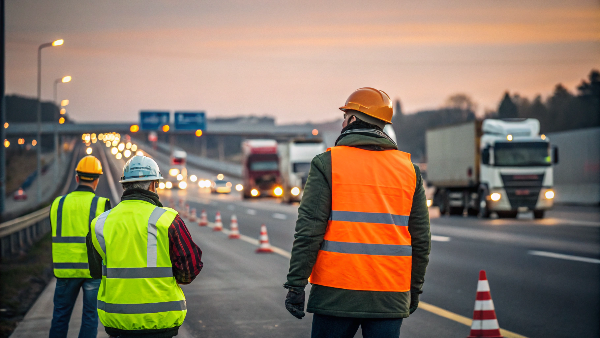
The term "Level 2 safety vest" is commonly used in conversation to refer to Class 2 high-visibility safety apparel as defined by the ANSI/ISEA 107 standard. It's important to use the correct terminology to ensure you're getting garments that meet recognized safety benchmarks. At Vissafetywear, precision in meeting these standards is a priority.
ANSI/ISEA 107 Class 2 Explained
Class 2 HVSA is intended for workers who are exposed to traffic traveling under 50 mph (80 km/h) or who work against complex backgrounds where their visibility needs to be significantly enhanced. These garments provide superior visibility compared to Class 1 but less than Class 3.
Key characteristics of Class 2 vests:
- Increased Material: They require a larger amount of fluorescent background material (minimum 775 sq. inches for yellow/orange, 540 sq. inches for red) and retroreflective tape (minimum 201 sq. inches) compared to Class 1.
- 360-Degree Visibility: The reflective tapes are configured to ensure the wearer is visible from all directions.
- Garment Styles: Class 2 vests are typically sleeveless.
Who Needs Class 2 Vests?
Class 2 vests are suitable for a wide range of workers, including:
- Roadway construction workers in zones where traffic is controlled and speed is reduced.
- Utility workers operating near roadways.
- Survey crews in areas with slower traffic.
- Airport baggage handlers and ground crew.
- School crossing guards.
- Parking and toll gate personnel.
- Law enforcement directing traffic in controlled situations.
Material Requirements for Class 2 (ANSI/ISEA 107)
| Feature | Class 1 | Class 2 | Class 3 |
|---|---|---|---|
| Min. Background Fabric | 217 sq. inches | 775 sq. inches (Yellow/Orange) OR 540 sq. inches (Red) | 1240 sq. inches (Yellow/Orange) OR 775 sq. inches (Red) |
| Min. Retroreflective Tape | 155 sq. inches (configured) | 201 sq. inches (configured) | 310 sq. inches (configured) |
| Typical Garment Style | Basic vest, often sleeveless | Vest, typically sleeveless | Vest or jacket, often with sleeves |
| Intended Environment | Off-road, well-separated from traffic | Near roadways (<50 mph traffic), complex backgrounds | Near roadways (>50 mph traffic), high-risk areas |
At Vissafetywear, our production capabilities allow us to manufacture large volumes of Class 2 safety vests that fully comply with ANSI/ISEA 107. We understand the importance of these garments for worker safety, and our triple inspection process ensures every vest meets the required specifications for material amounts and placement. Our clients, like Danny Cheng who serves diverse industries, rely on us for consistent quality in these essential safety items.
Are blue hi vis vests legal?
You've probably seen blue high-visibility style vests. But can you actually use them for official safety purposes where compliance is key? Using non-compliant colors can risk worker safety and might even lead to fines. We're here to explain the rules about colors for safety vests.
For ANSI/ISEA 107 compliance, the background material of hi-vis vests must be fluorescent yellow-green, orange-red, or red. Blue vests are not compliant with this standard for high visibility. They can be used for identification or in roles not requiring ANSI-compliant HVSA.
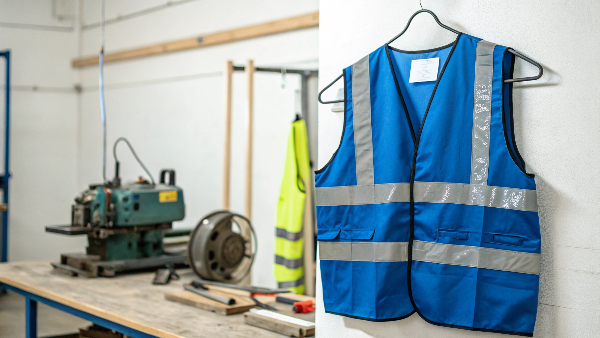
The question of whether blue hi-vis vests are "legal" depends on the context and the specific safety standards that apply to a given work environment. For official high-visibility safety apparel (HVSA) that needs to meet standards like ANSI/ISEA 107 (in the US) or EN ISO 20471 (in Europe), specific colors are mandated.
ANSI/ISEA 107 and EN ISO 20471 Color Standards
Both major international standards for high-visibility clothing are very clear about permissible background colors:
- Fluorescent Yellow-Green: This is the most common color, offering high visibility in daylight and contrasting well with many backgrounds.
- Fluorescent Orange-Red: This color is also highly visible and provides good contrast, especially against foliage or in snowy conditions.
- Fluorescent Red: Allowed under ANSI/ISEA 107, though less common than the other two for full garments. It provides good daytime conspicuity.
Blue is not an approved color for the background material of compliant HVSA under these standards. The reason is that these specific fluorescent colors are chosen for their ability to be highly conspicuous against a wide range of natural and man-made environments during daytime. Blue does not offer the same level of conspicuity, especially at dawn or dusk, or against certain backgrounds.
When Blue Vests Are Used
Despite not being ANSI/ISEA 107 or EN ISO 20471 compliant for high-visibility purposes, blue vests (and other non-compliant colors like green, black, or pink) are often used for:
- Identification or Role Differentiation: Companies might use different colored vests to easily identify different teams, visitor status, or job roles on a site (e.g., blue for supervisors, green for first-aid). This is common in warehouses or event management.
- Non-Regulated Environments: In work areas where high-visibility to traffic is not the primary concern and specific HVSA standards are not mandated, companies might opt for other colors for branding or organizational purposes.
- Uniformity: Sometimes they are part of a company uniform where conspicuity to traffic is not the main safety requirement.
Importance of Compliant Colors for Safety
It's crucial to use compliant fluorescent yellow-green, orange-red, or red vests when workers are exposed to hazards from moving vehicles or equipment, especially in low light or complex backgrounds. Using non-compliant colors in such situations can compromise worker safety and may lead to regulatory non-compliance.
| Color | ANSI/ISEA 107 Compliant (Background)? | EN ISO 20471 Compliant (Background)? | Typical Use When Not for HVSA Compliance |
|---|---|---|---|
| Fluorescent Yellow-Green | Yes | Yes | Standard high-visibility |
| Fluorescent Orange-Red | Yes | Yes | Standard high-visibility |
| Fluorescent Red | Yes | Yes | Standard high-visibility |
| Blue | No | No | Identification, visitor vests, specific roles |
| Green (non-fluorescent) | No | No | Identification, specialized roles |
| Black | No | No | Identification, security, event staff |
At Vissafetywear, we produce millions of compliant safety vests in fluorescent yellow-green and orange-red. While we can manufacture vests in custom colors like blue for identification purposes (with clear understanding they are not for ANSI/EN hi-vis compliance), our core mission is to provide top-quality, compliant HVSA to protect workers globally. We always advise clients on the correct color choices based on their specific safety requirements and regulatory landscape.
What are the disadvantages of Velcro?
Are you thinking about using Velcro closures for your safety vests? While Velcro has its benefits, especially for quick use and breakaway features, it also has some downsides you should be aware of. We want to outline Velcro's potential disadvantages for you.
Velcro can wear out over time, especially with frequent use, and lose its ability to grip securely. It can also collect debris like lint, dirt, and threads, which makes it less effective. In some heavy-duty jobs, it might not feel as secure as a zipper closure.
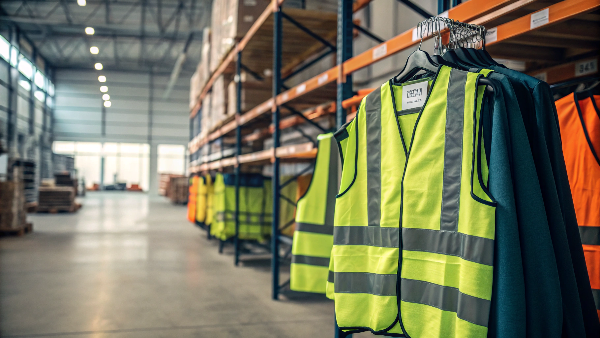
Velcro (hook-and-loop fastener) is a common closure system for safety vests due to its convenience and role in breakaway designs. However, it's important to consider its potential drawbacks, especially for long-term or heavy-duty use. As a manufacturer, we at Vissafetywear see these aspects play out in real-world applications.
Durability and Wear Over Time
One of the main disadvantages of Velcro is its lifespan.
- Loop Side Degradation: The "loop" side of Velcro can become fuzzy and matted over time with repeated fastening and unfastening. This reduces the ability of the "hook" side to grip effectively.
- Hook Side Clogging: The "hook" side can get clogged with lint, threads, hair, and other debris. While this can sometimes be cleaned, it’s often a persistent issue that diminishes its holding power.
- Washing Impact: Frequent washing, especially if not done carefully (e.g., not closing the Velcro before washing), can accelerate wear and tear.
Debris Accumulation
Velcro is notorious for attracting and holding onto various types of debris.
- Reduced Effectiveness: As mentioned, lint, dirt, and other particles can clog the hooks and loops, making the closure less secure.
- Appearance: A debris-filled Velcro strip can look untidy.
- Maintenance: It requires more effort to keep clean compared to a zipper. You might need to periodically pick out debris with tweezers or a stiff brush.
Perceived and Actual Security
While excellent for breakaway safety, the inherent nature of Velcro means it might not always feel as secure as other closures.
- Accidental Opening: In some situations, particularly with older or worn Velcro, it might pop open unexpectedly during strenuous activity, though this is less common with good quality, new Velcro.
- Not Ideal for Heavy Loads: If the vest has pockets that are regularly filled with heavy items, the strain might be too much for Velcro over the long term compared to a sturdy zipper.
Mitigating Disadvantages
While these disadvantages exist, some can be mitigated:
- High-Quality Velcro: At Vissafetywear, when we use Velcro, we opt for industrial-strength or high-quality versions that are more durable and resistant to wear.
- Proper Care: Educating users on how to care for Velcro (e.g., keeping it closed when not in use or during washing) can extend its life.
- Appropriate Application: Using Velcro primarily for its breakaway safety benefits, rather than as the sole closure for extremely heavy-duty, long-life garments where security is paramount, is often the best approach.
Here's a summary table:
| Disadvantage | Explanation | Potential Impact |
|---|---|---|
| Wear and Tear | Hooks and loops degrade with use and washing. | Reduced holding power, vest may not stay closed. |
| Debris Collection | Lint, dirt, and fibers get caught in the hooks and loops. | Closure becomes less effective, looks untidy, needs cleaning. |
| Security | Can feel less secure than zippers, may open under high strain (if not breakaway). | Vest might open unintentionally; less suitable for heavy loads. |
| Noise | The ripping sound of opening Velcro can be loud. | Can be disruptive in quiet environments (minor issue). |
Understanding these points helps in making an informed decision. For many applications, especially where breakaway is critical, Velcro remains a valuable option. We discuss these pros and cons with our clients to ensure the chosen closure matches their operational needs and longevity expectations.
Conclusion
Choosing the right safety vest involves many factors. We at Vissafetywear are dedicated to providing reliable, compliant, and economical high-visibility solutions to protect your team effectively worldwide.
-
Explore the advantages of mesh polyester for safety vests, especially in hot climates, to keep workers comfortable and safe. ↩
-
Learn why Modacrylic is essential for flame-resistant safety vests, particularly in high-risk industries like oil and gas. ↩
-
Discover eco-friendly materials for safety vests that align with sustainability goals while ensuring worker safety. ↩
-
Learn about the ANSI/ISEA 107 standard to ensure compliance and safety in high-visibility apparel for workers. ↩
-
Explore this link to understand the essential features and benefits of Class 3 vests for maximum safety in hazardous environments. ↩
-
Discover the significance of high-visibility safety apparel in protecting workers in dangerous environments and ensuring their safety. ↩
-
Learn about high-visibility materials and their critical role in safety gear, helping to keep workers safe in various environments. ↩
-
Discover effective methods for conducting risk assessments to choose the right safety vests, ensuring optimal worker safety. ↩

